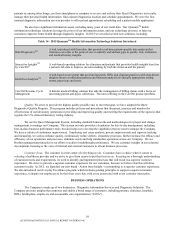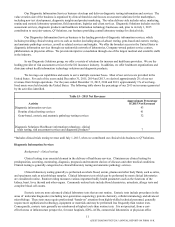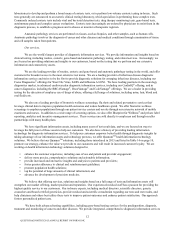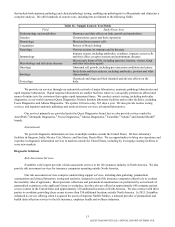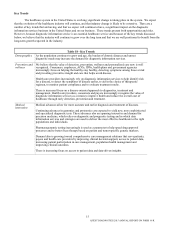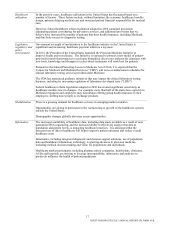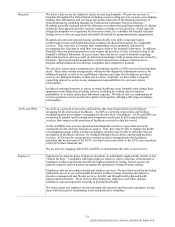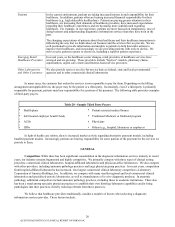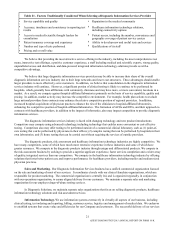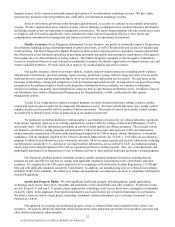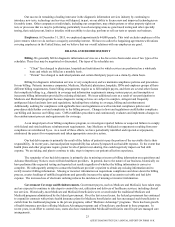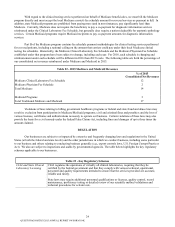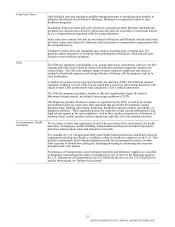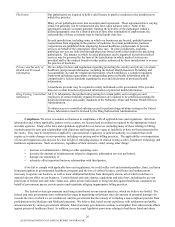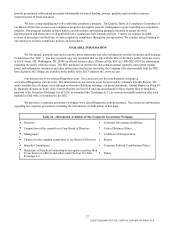Quest Diagnostics 2015 Annual Report Download - page 22
Download and view the complete annual report
Please find page 22 of the 2015 Quest Diagnostics annual report below. You can navigate through the pages in the report by either clicking on the pages listed below, or by using the keyword search tool below to find specific information within the annual report.
18
Customers
We provide diagnostic information services to a broad range of customers, including those discussed below.
Table 19 - Customers
Health plans including
managed care
organizations and
other health insurance
providers
These customers typically reimburse us as a contracted provider on behalf of their members. In
certain locations, health plans may delegate to independent physician associations (“IPAs”) or
other alternative delivery systems (e.g., physician hospital organizations, ACOs, patient-
centered medical homes) the ability to negotiate for diagnostic information services on behalf of
certain members.
Health plans and IPAs often require that diagnostic information services providers accept
discounted fee structures or assume all or a portion of the financial risk associated with
providing such services through capitated payment arrangements. Under capitated payment
arrangements, we provide services at a predetermined monthly reimbursement rate for each
covered member, generally regardless of the number or cost of services provided by us.
Reimbursement under programs that do not provide for capitated payments is typically
negotiated on a fee-for-service basis.
Reimbursement from our five largest health plans totaled less than 20%, and no one health plan
accounted for 10%, of our consolidated net revenues in 2015. Health plans typically negotiate
directly or indirectly with a number of diagnostic information services providers, and represent
approximately one-half of our total clinical testing volumes and one-half of our net revenues
from diagnostic information services. There has been a trend of consolidation among health
plans. Health plans also are narrowing their provider networks.
We are also sometimes a member of a “complementary network.” A complementary network
generally is a set of contractual arrangements that a third party will maintain with various
providers that provide discounted fees for the benefit of its customers. A member of a health
plan may choose to access a non-contracted provider that is a member of a complementary
network; if so, the provider will be reimbursed at a rate negotiated by the complementary
network.
We attempt to strengthen our relationships with health plans and increase the volume of our
services for their members by offering to health plans services and programs that leverage our
Company's expertise and resources, including our superior access, extensive test menu, medical
staff, data, IT solutions, and wellness and disease management capabilities.
Clinicians Clinicians, including both primary care physicians and specialists, requiring diagnostic
information services for patients are the primary referral source of our services.
Clinicians determine which laboratory to recommend or use based on a variety of factors,
including those set forth in Table 21 on page 21.
QUEST DIAGNOSTICS 2015 ANNUAL REPORT ON FORM 10-K




